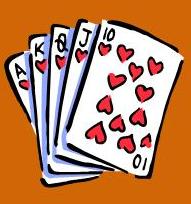Vegetables on the
Thanksgiving Table
My Favorite Roots by Celise McLaughlin
The roots of any plant are its anchor and foundation; they are the essential parts that support and nourish the plant.
Root vegetables lend these properties to us when we eat them, making us feel physically and mentally grounded and rooted,
increasing our stability, stamina and endurance.
Roots are a rich source of nutritious complex carbohydrates, providing a
steady source of necessary sugars to the body. Instead of upsetting blood sugar levels like refined sweet foods,
they regulate them. Since they absorb, assimilate and supply plants with vital nutrients, roots likewise increase
absorption and assimilation in our digestive tracts.
Long roots, like carrots and parsnips are excellent blood purifiers and can help
improve circulation in the body and increase mental clarity. Round roots, like radishes, beets and rutabagas,
are nourishing to the stomach, spleen, pancreas and reproductive organs and can help regulate blood sugar and moods,
and alleviate cravings.
For me, Thanksgiving is not complete without Rutabaga and Carrots as two the traditional sides.
Mashed Rutabaga is one of those comfort foods that brings back memories of childhood. It doesn't need seasoning or butter.
Just peel, cut, cook, mash and put it on my plate.
I don't have any specific memories of carrots, other than the fact they were on the table; one of the many orange colored vegetables that
were passed.
A few years ago I came across a carrot recipe in a Better Homes and Gardens magazine that I have adopted as my new favorite.
Although the chardonnay may counter-balance the increase in mental clarity for the root vegetable, it adds so much flavor.
On this page is copy of this recipe compliments of BH&G and me. Hope you enjoy it as much as I do. Happy Thanksgiving!
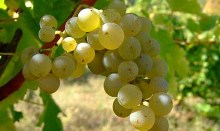
Sauvignon Blanc
Originally a varietal indigenous to South West France, Sauvignon Blanc is today cultivated worldwide. An early American favorite,
the wine has been popularized as a crisp, dry white varietal wine of California — sometimes labeled under the alias "Fumé Blanc."
The flavor can range from strong grassy to tropically sweet, with notes of grapefruit and occasionally bell-pepper.
But Sauvignon Blanc has a number of identities ranging from a clean, slight grassy white wine to an herbaceous,
full-bodied wine backed up with oak aging. It is a very food-friendly wine and
terrific for appetizers such as veggie dishes and creamy dips.
However, it does its best service at the table when paired with strong,
forceful, herbal flavors like goat cheese and fragrant Greek and Caesar salads, Thai food, Sushi and, of course, Poultry.
Open a bottle this Thanksgiving. Toast to your health!

Climber 2009 Sauvignon Blanc
|
|
All Aboard the Grain Train
By Celise McLaughlin
|
On one of my excursions to Tuesday Morning looking for good decorating bargains I happened by the book aisle.
Not just books, cook books. I’m a sucker when it comes to the cook books, especially the ones with big color
pictures and specialty recipes. Having recently changed my eating habits to low carbohydrates and high fiber,
one book drew my attention immediately. Good Housekeeping Grains! 125 Delicious Whole-Grain Recipes from Barley & Bulgur
to Wild Rice & More. It was a good find at Tuesday Morning for only $5.99, Barnes & Noble was selling it for $12.
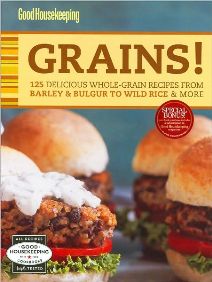 |
Not only has this prize find brought me good healthy recipes, but a valuable education as well; and that, like it or not,
I am going to share with you.
Whole grains are the seeds from grasses. Before conventional processing they are packed with nutritional forms of proteins, fiber and vitamins.
Unfortunately most of these processes remove the fiber and refine the grains in order to extend shelf life. This leaves very little
of the natural nutritional value.
When shopping for whole-grain foods the book recommends looking for the bright yellow whole-grain
council stamp. I didn't know there was a Whole-Grains Council, but there is and they exist solely to help
consumers find whole grain foods and understand their health benefits. For more on that organization, visit their website at
www.wholegrainscouncil.org
|
All the health benefits associated with the whole grain had me convinced.
Being the obsessive compulsive I am, I began stocking my pantry with so many of these wholesome little devils, with good intentions, of course.
Here are a few:
Barley -
Barley can be pearled, hulled, gritted, ground or flaked. Barley is higher in fiber and better at reducing cholesterol than oats, so they say.
As a child, my favorite soup was Beef and Vegetable Barley. Never knew what barley was, nor did I care. It was good!
Now I'm finding ways to use it for other than just soup, like a side dish or even a main course casserole with sausage.
|  |
Quinoa - I was introduced to quinoa quite some time ago. Because of its high protein value it can be used as a meat substitute.
You can find it in the rice aisle at the grocery store. A box is quite expensive, but a little goes a long way and it cooks up quicker than rice.
It's generally used in salads with nuts and raisins and is eaten hot or cold.
Steel Cut Oats - Oats, cut, not rolled. What was I thinking? I've only found cookie, breakfast and bread recipes so far
for this grain and some BLOGs rave about it. Haven't use them yet, so the jury is still out on this one.
Wheat Berries - I searched long and hard to find these little nuggets after I saw Ann Burrell use them in a braised pork shoulder
recipe on the Food Network.
I finally found them with the dried fruits and nuts at Fresh Market. Wheat berries have to simmer in liquids for over 1 hour, like dried beans,
and can be used in salads and sides. All wheat products, such as flour, come from wheat berries. They are high in fiber and low in calories.
I've only scratched the surface of all the grains that are out there. This winter I am looking forward to trying out lots of the new recipes in
my book. John's boarded the grain train too, although he doesn't know it yet.

Traditional Foods of Hanukkah
Hanukkah is a Jewish holiday celebrated for eight days and nights. It starts on the 25th of the Jewish month of Kislev,
which coincides with late November-late December on the secular calendar.
In Hebrew, the word "hanukkah" means “dedication.” The name reminds us that this holiday commemorates the re-dedication of
the holy Temple in Jerusalem following the Jewish victory over the Syrian-Greeks in 165 B.C.E.
The traditional foods consumed during the Hanukkah holiday are symbolic of the events being celebrated.
Most are fried in oil, symbolic of the oil that lasted eight days. Others contain cheese to celebrate Judith's victory.
Pancakes are a traditional dish, serving as a reminder of the food hurriedly prepared for the Maccabees as they went into battle,
along with the oil they are fried in as a reminder of the miraculous oil.
Latkes were originally symbolic of the cheesecakes served by the widow Judith, and later evolved to the potato/vegetable fried
latkes most known today. Many cheese and dairy dishes are consumed in memory of brave Judith.
A newer tradition in the United States is the baking of butter cookies or pretzels in the shape of Hanukkah symbols while
relating the stories. Children delight in helping and learn as they create, as well.
The Hannakah recipe collection includes many Hanukkah favorites such as latkes, bimuelos, cheese gilt coins, kugel,
soft pretzels, brisket, tongue, and more. Although these foods are particularly significant during Hanukkah, you will enjoy them year-round.
judaism.about.com/od/holidays/a/hanukkah.htm
|
|
HOLIDAY RECIPES
At the most recent Winey Wednesday, one of our newer neighbors brought an appetizer for us to try.
Because it was huge hit, we asked for the recipe. Super easy too!
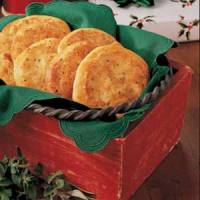 Italian Rounds
Italian Rounds
Courtesy of Sharon Nowak, Opera Court
Ingredients
- 2/3 c parmesan cheese
- 1/2 c mayo
- 1/4 tsp dried basil
- 1/8 tsp garlic powder
- 1/8 tsp dried oregano
- pinch salt
- pinch onion powder
- 1 tube buttermilk biscuits
Directions
combine first 7 ingredients; separate biscuits, let stand on cookie sheet 5 minutes. flatten into 4 inch circles; spread 1 tblsp mix on top.
bake 400 degrees 10-13 minutes.
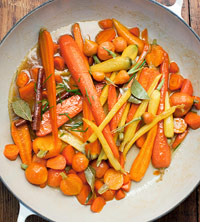
Chardonnay Glazed Carrots
Courtesy of BH&G
ingredients
- 2 lb. assorted carrots
- 1 cup Chardonnay
- 1/2 cup honey
- 2 Tbsp. unsalted butter
- 1 tsp. kosher salt
- 2 cinnamon sticks
- 2 bay leaves
- 2 Tbsp. sliced chives
directions
- Peel large carrots. Slice carrots lengthwise and/or crosswise.
Heat a large skillet over medium-high heat. Add wine, honey, butter, salt, cinnamon, and bay leaves.
Bring to boiling, stirring to combine. Add carrots; return to boiling. Reduce heat to medium.
Cook, uncovered, 25 minutes, stirring often, until carrots are tender and glaze thickens.
- Remove from heat. Remove and discard cinnamon stick and bay leaves. Sprinkle with chives. Makes 8 servings.
|
|
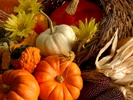























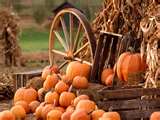



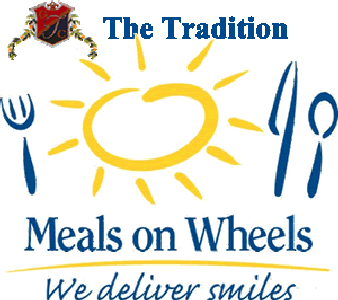

 Looking for short term volunteers
Looking for short term volunteers 

















 POOL HOUSE CALENDAR
POOL HOUSE CALENDAR